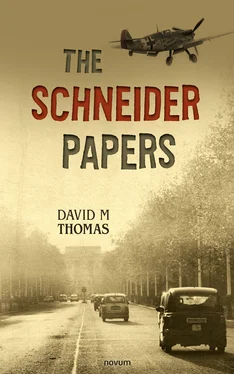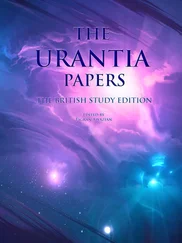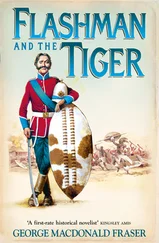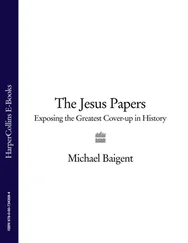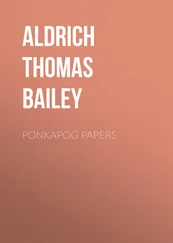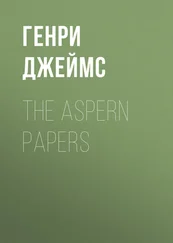David M Thomas - The Schneider Papers
Здесь есть возможность читать онлайн «David M Thomas - The Schneider Papers» — ознакомительный отрывок электронной книги совершенно бесплатно, а после прочтения отрывка купить полную версию. В некоторых случаях можно слушать аудио, скачать через торрент в формате fb2 и присутствует краткое содержание. Жанр: unrecognised, на английском языке. Описание произведения, (предисловие) а так же отзывы посетителей доступны на портале библиотеки ЛибКат.
- Название:The Schneider Papers
- Автор:
- Жанр:
- Год:неизвестен
- ISBN:нет данных
- Рейтинг книги:3 / 5. Голосов: 1
-
Избранное:Добавить в избранное
- Отзывы:
-
Ваша оценка:
- 60
- 1
- 2
- 3
- 4
- 5
The Schneider Papers: краткое содержание, описание и аннотация
Предлагаем к чтению аннотацию, описание, краткое содержание или предисловие (зависит от того, что написал сам автор книги «The Schneider Papers»). Если вы не нашли необходимую информацию о книге — напишите в комментариях, мы постараемся отыскать её.
A narrative of disparate characters, from the leonine intelligence chief Major Alastair Cartwright MC in London to the clever and elegant Elisabeth Schneider, economist and Soviet spy, this is a story of American business funding Nazi Germany and the rebuilding of Soviet Russia, as part of President Franklin D. Roosevelt's New Deal programme.
The Schneider Papers — читать онлайн ознакомительный отрывок
Ниже представлен текст книги, разбитый по страницам. Система сохранения места последней прочитанной страницы, позволяет с удобством читать онлайн бесплатно книгу «The Schneider Papers», без необходимости каждый раз заново искать на чём Вы остановились. Поставьте закладку, и сможете в любой момент перейти на страницу, на которой закончили чтение.
Интервал:
Закладка:
Cartwright rose from his chair, and began walking around the wide eighteenth century walnut table with the five listening heads turning to follow his circumnavigation. He talked as he slowly walked, looking at no one in particular, deeply immersed in his oral dissertation.
‘Brussels fell, they marched into northern France. Favourite Parisian restaurants already earmarked for patronage, and remembered old masters hanging in art galleries ticked for new homes east of the Ardennes. Then it happened. At the battle of the Marne in September 1914, the French, supported by a small British Expeditionary force, launched a desperate counterattack that stopped the Germans in their tracks.’ He stopped, turned and glared defiantly at his audience. ‘Then, by jove,’ clenching his right fist, ‘the same thing happened at Ypres a few weeks later.’
‘Where are you going with all this, Cartwright?’ questioned a now impatient clock-watching Maurice deVilliers, head of Foreign Office Administration, index finger tapping his writing pad.
Cartwright ignored the interruption. ‘The quick and decisive German invasion was stuck in the mud of Flanders. The Russians had now woken up and they were pressing from the east. Consequence?’ He stopped and looked at his audience. No response. He had the floor. His show. His reply to his question was expected. Hypophora was a well known Cartwright device for engaging his audience; ask a question and then answer it. Quite effective, and they were used to it. They all knew Cartwright.
‘Germany had prepared meticulously for the war – but for a short war, with no contingency plans for a more protracted conflict. The Fatherland had a serious natural resources problem. Nitrates, oil and rubber, all vital to sustain a long war, were only available from abroad. But we had our Royal Navy controlling the sea routes and implemented a strategy we used against Napoleon; that is to say, gentlemen, a maritime blockade.’
He turned and stopped at a spot near the fireplace where he could look at their faces. He stared into each one in turn, just for a second or so. He was speaking directly to the individual.
‘Now, and this is important, the Germans imported most if not all of its nitrates for the use of explosives from Chile. The German Chiefs of Staff were warned about this potential blockade headache, but ignored it because of absolute confidence in the Schlieffen Plan. Then as 1914 drew to a close and the opposing armies entrenched in northern France, with the now obvious start of a war of attrition, virtual panic set in amongst the Imperial General Staff. They were, gentlemen, running out of explosives.
‘Panic! What to do? What did they do?’ Cartwright raised his hands in mock consternation. And again once the curiosity of his audience was assured, he answered his own question. ‘The solution was to make nitrates artificially, so to speak. Germany was and is, and I stress this fact, blessed with a strong chemical industry and world class industrial chemists. This alchemy was achieved. All that was required, and I say this as a non-scientist, was the mixing of nitrogen and air and innovative high pressure engineering chemistry. Explosives shortage solved. What brought the war to an end in 1918 was not a shortage of explosives.’ He said this with finger pointing emphasis.
‘Now gentlemen, let’s move forward to today, 1931. We should concentrate our surveillance efforts on countries we feel need watching.’ He held up his hands and brought them together as if in prayer. ‘Geopolitics and economics in the context of intelligence gathering need to merge. It is therefore my submission that we need to dedicate a department to this important issue. Political intelligence and resource intelligence working together.’ He paused, then repeated slowly and with emphasis, ‘Working together.’ Another pause. ‘I present you gentlemen a proposal.’
He bent down by his chair and from a large and scruffy dark brown Gladstone bag took out and distributed the requisite number of copies to his audience. He spent another ten minutes or so, seated this time, to explain his scheme. His project.
The new Industrial Resource Section or IRS proposal found itself on the agenda of two ad hoc gatherings including the all-important internal budget allocation sub-committee. Usual grumblings from the holders of the purse, fought off by an invited and sometimes exasperated, but always determined Cartwright. Then the day finally arrived; the sprinkling of holy water over the project by the Permanent Secretary at the Foreign Office gave it life.
Cartwright, on hearing the news, celebrated with a bottle of Chateau Lafon at his club. He sat by the window, armchair turned so he looked out at the activity on Pall Mall, and for privacy. He drank alone, deep in thought.
And so the Industrial Resource Section was born, its subject remit decided by high ranking Foreign Office civil servants and Bolshevik-wary politicians: the Soviet Union should be its primary concern. It came first, especially with the Russian eye permanently cast towards the Middle East and India. Other countries were left to Cartwright’s discretion and direction from the Chiefs of Staff Intelligence Committee.
The Industrial Resource Section, the IRS was to assess industrial capacity and natural resources in the Soviet Union. Bolshevism was the bête noire of Western Europe and America. ‘Best keep a close eye on those Bolshie chaps,’ was the standing order. As time and world events moved on, so did the department. It grew and spread to tabulate salt imports into Japan, rubber into Italy, and iron ore, copper and manganese into Germany. Scissors in hands, IRS people would organise press cuttings, albums, and various trade almanacs, collected and cross indexed on shelves dedicated to countries, commodities and products.
Its world was different from that of the soldier, sailor, and airman.
However, first things first. Cartwright needed a new home, a central command for his data gathering and data analysis enterprise.
***
He was led up to the first floor, and entered what the Superintendent of Buildings and Works had described as a spacious and airy office area, ideal for open plan use. ‘If only walls could talk, Major Cartwright sir,’ Mr Babbage remarked wistfully, clipboard in hand, with a short stubby pencil tucked behind his right ear and dressed in a long brown work coat. They stood with unconscious respect to past occupants in the middle of Room 10. Both took in the silence of the now empty ballroom, with its two plaster medallion ceiling mouldings and bare hooks which once held crystal chandeliers. Mr Babbage swept his arm towards his pièce de résistance selling point at the far wall: an ostentatious man-height white rococo marble fireplace with large scroll bracket corbels and two carved arches, centred with an ornate keystone. ‘Impressive, wouldn’t you say sir,’ admired Babbage. He walked over to it, and lovingly stroked the mantelpiece. Like an estate agent, which one supposes he was, albeit for the Foreign Office branch of HM Government, he then continued over to one of the six long casement windows overlooking St James’ Park, opened the window wide, and looked up at the sun shining above the horse chestnut and plane trees along Birdcage Walk. He inhaled slowly and deeply, and turned to his client and said in his best sales patter, ‘You just can’t get better than this sir. Not on this west side of Whitehall,’ he added quickly, to cover himself. Mr Babbage of Whitehall office management had been in his job a long time, and had learnt from his masters the art of protecting oneself against future accountability.
‘Very well, I’ll take it. Long lease, obviously,’ replied a very satisfied Cartwright.
The new home of the Industrial Resource Section: Queen Anne’s Gate, a short hop, skip and a jump from the Foreign and Colonial Office. Within a few weeks the ballroom had come to life; rows of desks, chairs, telephones, a glass-topped map, and work tables. The wall opposite the windows was jocularly referred to as the library. Here rows of bookshelves reached from floor to ceiling covering the whole wall. It housed the industrial reference collection. There were two doors set in this wall of almanacs, box files and albums, both leading out to the first floor. Over in the corner, as far away from the fireplace as possible, and in a newly-constructed, glass-framed, ceiling-high independent office sat the intangible man. He had the usual office paraphernalia: a wide desk, a blue velvet captain’s chair on castors (his own purchase), two uncomfortable-looking straight-backed visitors chairs, a four drawer steel filing cabinet times three, a row of black bakelite telephones on a stand next to the desk, and a free standing teleprinter machine. Cartwright had an uninterrupted view of his ballroom. This enclosure was later referred to as the greenhouse by one and all. As one Foreign Office wag, who had popped in to see Cartwright on one thing or another, shared the scene with colleagues over a drink in a Foreign Office basement watering hole: ‘… there he was, in the greenhouse, jacket off, hunched over his lever operated desktop calculator adding up figures like a turf accountant totting up the day’s takings …’ One of them guffawed and someone ordered another round of drinks.
Читать дальшеИнтервал:
Закладка:
Похожие книги на «The Schneider Papers»
Представляем Вашему вниманию похожие книги на «The Schneider Papers» списком для выбора. Мы отобрали схожую по названию и смыслу литературу в надежде предоставить читателям больше вариантов отыскать новые, интересные, ещё непрочитанные произведения.
Обсуждение, отзывы о книге «The Schneider Papers» и просто собственные мнения читателей. Оставьте ваши комментарии, напишите, что Вы думаете о произведении, его смысле или главных героях. Укажите что конкретно понравилось, а что нет, и почему Вы так считаете.
